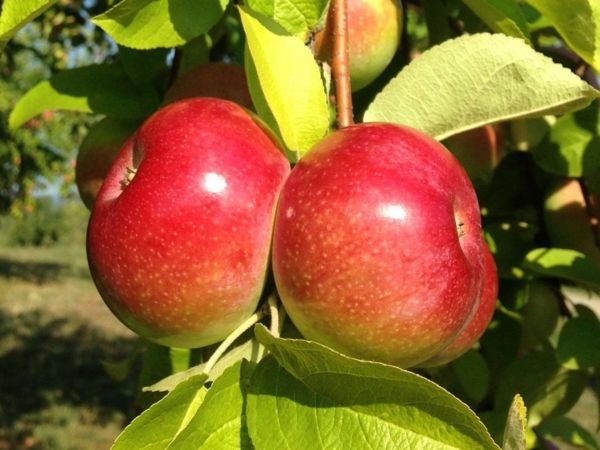An attractive, highly disease-resistant apple, ideal for organic growers.
McIntosh Apple on G.969 (Spring 2024)
The classic New England and Canadian heirloom dessert apple.
McIntosh is a medium-large spreading tree. It is cold hardy and a heavy cropper but it does tend to biennialism if not thinned. It is highly susceptible to scab, somewhat susceptible to fireblight, and resistant to cedar-apple rust. While this tree can be grown in warmer climates, the best fruit quality is attained in zones 4 and 5.
Perhaps the most iconic apple of the modern era, McIntosh is a round, slightly flattened, mid-sized fruit. The skin shows a splash of cherry red over bright green and the flesh is bright, bright white. This apple is known mainly for its distinctive flavor: perfumed, subacid, spicy, and vinous (like wine). It has many progeny–Macoun, Spartan, Empire, and Cortland to name a few–and they all share the amazing Mac flavor.
McIntosh was first discovered in the early 1800s as a seedling by an Ontario farmer, John Mcintosh. John so loved his foundling tree that he tried to propagate it from seed several times, to no avail. Fortunately, in 1835, an itinerant worker taught John how to graft, and he set about selling the tree in his nursery. (A good account of the McIntosh family history and the early days of the apple can be found in Manhart, Apples for the 21st Century.) McIntosh's moderate popularity was significantly boosted by the development of sprays that took the apple from its natural state (covered in cracked black scabs) to a commercially viable apple. This was also the apple that stepped into the void that had been created by the killing winter of 1934-1935, which destroyed many of the Baldwin orchards in the Northeast. In Canada, it was the eminent pomologist, William Macoun who promoted the apple, finding it ideally suited to that climate. Today, of course, we all know McIntosh not just as an apple, but also for its eponymous association with Apple Computers' line of products.
NB: McIntosh is the standard by which we measure the ripening date of all other apple varieties at Cummins Nursery. Our ripening time, in upstate NY, is mid-September.
The Fruit
Fruit Type
Category: Apple
Subcategory:
Heirloom, Cider, Cold-Hardy
Fruit Uses & Storage
Uses: fresh eating, cider, baking, sauce
Cider classification: sweet
Storage duration: less than one month (approximate, depending on storage conditions)
Fruit Appearance
Skin color: red
Flesh color: white
Fruit Origins
Parentage: unknown
Origin: Ontario, Canada
Introduced in: early 1800s
Introduced by: John McIntosh
The Environment
Calendar & Geography
USDA zones: 4 - 6
Chill hours: 900
Ripening date: Sep 15 (approximate, in New York State) +0 days after McIntosh
Tree Height & Spacing
glossary
Rootstock: G.969 Rootstock
Rootstock size class: Semi-Dwarf (45% of Standard)
Tree spacing (natural spread of tree): 12'
Good for wildlife planting? N
Diseases & Pests
glossary
Apple Scab: Very Susceptible
Fireblight: Susceptible
Cedar-Apple Rust: Resistant
Black Rot or Blossom End Rot or Frogeye Leaf Spot: Susceptible
Alternaria Leaf Blotch: Resistant
Pollination
Pollination Factors
glossary
Bloom group: 2
Is it self-fertile? N
Is it fertile? Y
Ploidy: Diploid
Rootstock size class:
Semi-Dwarf (45% of Standard)
Pollination Partners
This table shows the first few results from a full search for pollenizers of McIntosh Apple on G.969. Please see our Pollenizer Search to run other queries and read how the application uses various factors. Also read more about fruit tree pollination.
See all pollination matches for McIntosh Apple on G.969
Featured Products
A few things we're loving right now...
A full-flavored, freestone white peach.
One of America's oldest apples, good for storage, baking, and cider.
A widely-grown, large, yellow-fleshed nectarine.






















